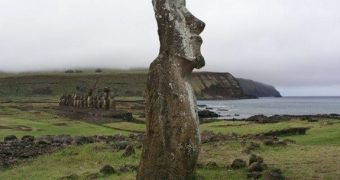People who lived on Easter Island in the southeastern Pacific Ocean hundreds of years ago had a surprisingly sweet tooth for rats, researchers argue in a paper recently published in the American Journal of Physical Anthropology.
More precisely, evidence at hand indicates that, since A.D. 1200 up until A.D. 1650, a species of rodents known as the Polynesian rat was the main source of proteins for people living in this part of the world.
According to Live Science, scientists managed to determine the diet of Easter Island's past inhabitants by analyzing nitrogen and carbon isotopes found in the teeth of 41 people who lived and died on this island, and whose bodies were only recently excavated.
These isotopes were then compared to others extracted from animal bones also found on the island. This allowed the researchers to pin down what the 41 individuals ate shortly before dying.
It was thus determined that, contrary to expectations, rats, chickens and various species of plants such as yams, sweet potatoes and bananas constituted these people's main diet.
“Our results indicate that contrary to previous zooarchaeological studies, diet was predominantly terrestrial throughout the entire sequence of occupation, with reliance on rats, chickens and C3 plants [plants that use typical photosynthesis to produce sugars],” the researchers reportedly write in their paper.
Given the fact that these people lived on an island, it is quite surprising that seafood did not stand at the core of their diet.
Researchers suspect this was because, unlike other islands, the one these people inhabited has fairly steep cliffs and therefore makes fishing a dangerous endeavor.
“Because of their geographic location and climate conditions, there just weren't as many marine products for them to get,” specialist Amy Commendador with the Idaho Museum of Natural History at Idaho State University explains.
“It was probably easier to go get a rat than it was to go get a fish,” study co-author John Dudgeon also argues.
By the looks of it, a handful of islanders nonetheless ate fish, and did so on a regular basis.
Researchers suspect that these people had a higher social status, and therefore had an easier time getting their hands on seafood. Another and much simpler explanation is that they lived in a part of the island where, courtesy of the local geography, it was not very difficult to go fishing.

 14 DAY TRIAL //
14 DAY TRIAL //